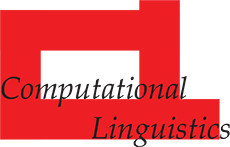Capturing Fine-Grained Regional Differences in Language Use through Voting Precinct Embeddings

Article / Journal
Author(s) / editor(s):
Alex Rosenfeld
,
Lars Hinrichs
Year: 2023
Computational Linguistics, 49(4), 883-942.
Keywords: bandwidth, computational linguistics, genes, image segmentation, modeling languages, social networking (online)Language(s): English
Abstract:
Linguistic variation across a region of interest can be captured by partitioning the region into areas and using social media data to train embeddings that represent language use in those areas. Recent work has focused on larger areas, such as cities or counties, to ensure that enough social media data is available in each area, but larger areas have a limited ability to find fine-grained distinctions, such as intracity differences in language use. We demonstrate that it is possible to embed smaller areas, which can provide higher resolution analyses of language variation. We embed voting precincts, which are tiny, evenly sized political divisions for the administration of elections. The issue with modeling language use in small areas is that the data becomes incredibly sparse, with many areas having scant social media data. We propose a novel embedding approach that alternates training with smoothing, which mitigates these sparsity issues. We focus on linguistic variation across Texas as it is relatively understudied. We develop two novel quantitative evaluations that measure how well the embeddings can be used to capture linguistic variation. The first evaluation measures how well a model can map a dialect given terms specific to that dialect. The second evaluation measures how well a model can map preference of lexical variants. These evaluations show how embedding models could be used directly by sociolinguists and measure how much sociolinguistic information is contained within the embeddings. We complement this second evaluation with a methodology for using embeddings as a kind of genetic code where we identify “genes” that correspond to a sociological variable and connect those “genes” to a linguistic phenomenon thereby connecting sociological phenomena to linguistic ones. Finally, we explore approaches for inferring isoglosses using embeddings.
https://doi.org/10.1162/coli_a_00487
Post created by: Lymor Wolf Goldstein